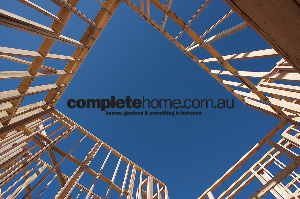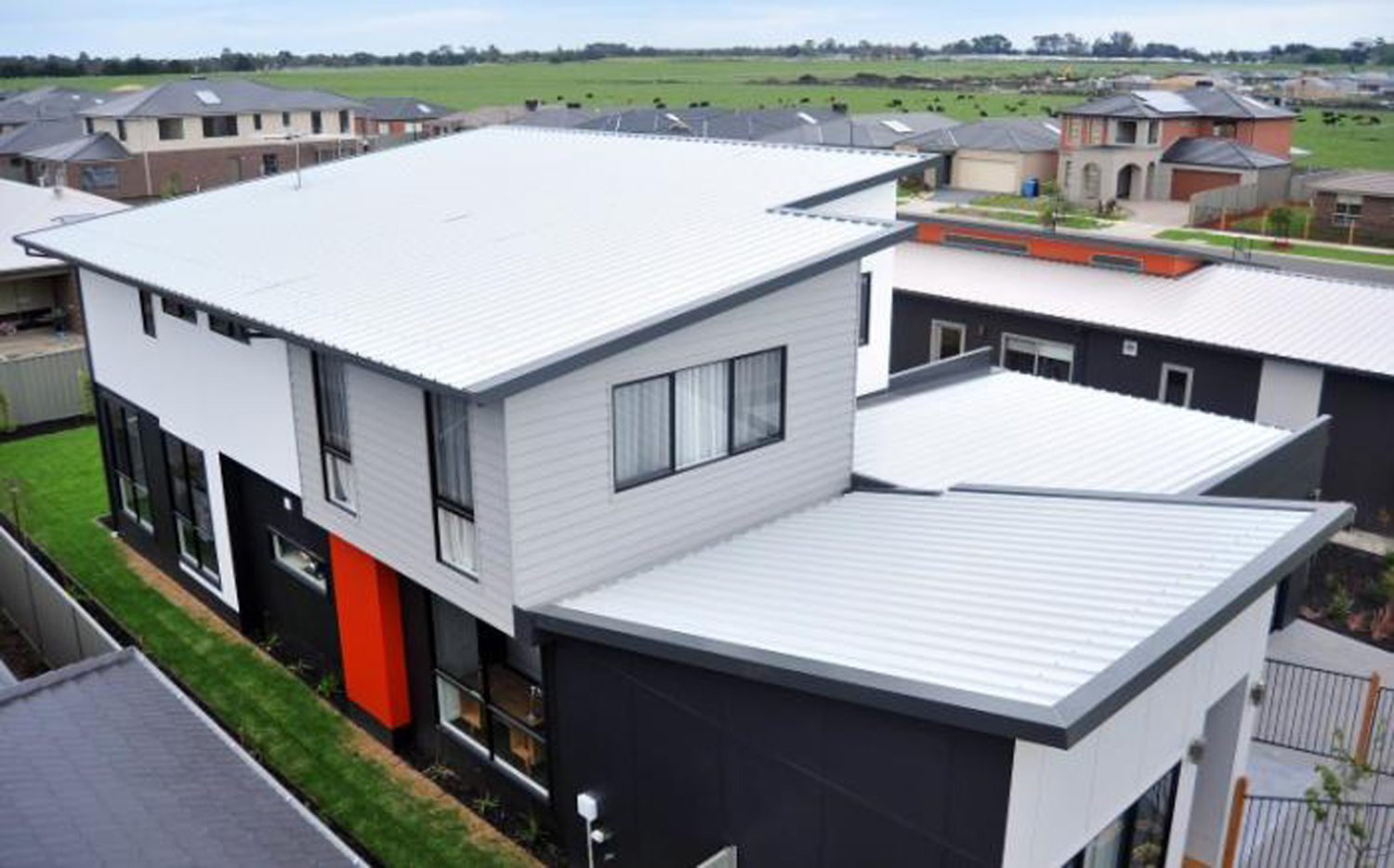By Kate Telfer
With the wide range of cladding, rendering and coating options available, you can easily replicate any style to create the perfect façade
Cladding – A revolutionary building product:
“Lightweight cladding has become part of the ongoing evolution of the building industry,” says Peter Farrell, owner of Pete’s Render. “As a result, the quality of products and systems has also evolved, creating great aesthetics and also peace of mind, knowing your house not only looks good but is durable and long lasting and, in some cases, better performed acoustically and thermally.”
Modern cladding systems have given homeowners and builders an incredible number of options compared with those of 10 to 15 years ago, when a brick finish was the standard choice. The facade systems of today offer an array of different looks and finishes without ongoing maintenance and deterioration. They are easier to install, more versatile and often significantly cheaper than traditional bricks or wooden boards.
Cladding – Match your home with its surroundings:
Unfortunately, it’s not uncommon in our suburbs to pass by a quaint weatherboard cottage sitting awkwardly in the shadow of a large, modern home. This higgledy-piggledy look can be smoothed over by selecting appropriate cladding that blends in with the environment and neighbouring homes.
It’s important to take into consideration the themes, colours, styles and cladding types used by neighbouring homes, in addition to the overall feel and look of the surrounding area. If the house is in a leafy street, often earthy-looking cladding such as stone or brick combined with neutral colours will match well.
Rendering the front of a home is always a good option. “Rendering the front façade or the entire house allows the owner to change the appearance of the home through the use of the texture and also the colour,” Peter says. “There are no limits to what colours can be selected, often enabling the home to fit better into its surrounds and environment.”
Cladding – Mixing and matching different cladding:
Applying a combination of different cladding types, materials, colours and textures to your home can create a contemporary look that still blends well with traditional neighbouring homes and the surrounding environment. Deb Duckworth of Hoobler Stone points out, “The use of several different cladding types on the façade of a house creates a unique and stylish look in many architectural situations, such as old-world, traditional, rustic or modern.”
Though homes with one style of cladding or rendering can look simple and original, they can sometimes appear flat and uninteresting. Incorporating different types of cladding, colours and rendering styles adds variation and depth to a façade. Your builder can help select styles and colours that will go well together.
“Stone pairs beautifully with many cladding materials to create a unique and stylish look,” explains Deb. “Its universal appeal and versatility date back thousands of years and continue to provide unlimited possibilities for building and landscaping projects.”
Cladding – Choose colours that complement:
The choice of external paint and cladding colouring is crucial to the overall look of your home. In order to create a home that fits well within the neighbourhood, choose colours that complement nearby homes as well as the natural environment. As a general rule, beachside properties look great when finished with bright, vivid colours, whereas homes in leafy, wooded areas are more suited to muted earth tones.
Haymes Paint offers colour-visualisation software in which homeowners can see what different colours will look like on the façade of their own homes by uploading a photograph and clicking on different paint swatches. The software costs $12.95 and can be downloaded at www.haymespaint.com.au. Dulux has similar computer software called MyColour Visualiser, which is free and easy to use at www.dulux.com.au/colour/mycolour.aspx.
Cladding – Select climate-appropriate cladding:
Your home’s exterior can feature one or a combination of countless types of exterior cladding such as brick, timber shingles, weatherboard, uPVC boards, stone, render, concrete, corrugated steel, blue board and polystyrene cladding. Along with aesthetic variation, exterior cladding also provides various benefits in different climates.
Carpenter Rob Lang advises using a brick or concrete cladding, such as Hebel Autoclaved Aerated Concrete, in very hot or cold climates because of its excellent thermal insulation qualities. “The cladding products that perform better in hot conditions will also perform better in cold conditions, as their thermal insulation will keep any external temperature out of the home,” he says. Rob also reveals that uPVC boards are an option for homes in a warmer climate, “as they exude the same quaint look of weatherboards but don’t expand in hot temperatures”.
Belinda Davies of Formplex adds, “The combined thermal insulation properties of uPVC wall cladding help to increase the energy-efficiency of the building, making it easier to obtain your five-star rating.”
Polystyrene is another cladding alternative for homes in hot or cold climates. “It has become a very popular choice over the past few years,” reveals Peter Farrell of Pete’s Render. “With basecoat render and acrylic texture applied, the total thickness of the coating system achieved is between 6mm and 8mm, making the surface very hard and durable. Polystyrene allows us to achieve excellent thermal and acoustic properties, as well as speeding up the construction process.”
Hot Cladding trends:
1. Using a combination of cladding styles to create a modern-looking home that still blends with its surroundings.
2. Opting for environmentally friendly cladding materials that have low embodied energy, such as timber and fibre cement.
3. Trying before buying with colour-visualisation software. Simply upload a digital image of your home into the computer program and experiment with colour without lifting a paintbrush.
4. Rendering your home for an instant and inexpensive update using a roll-on render.




